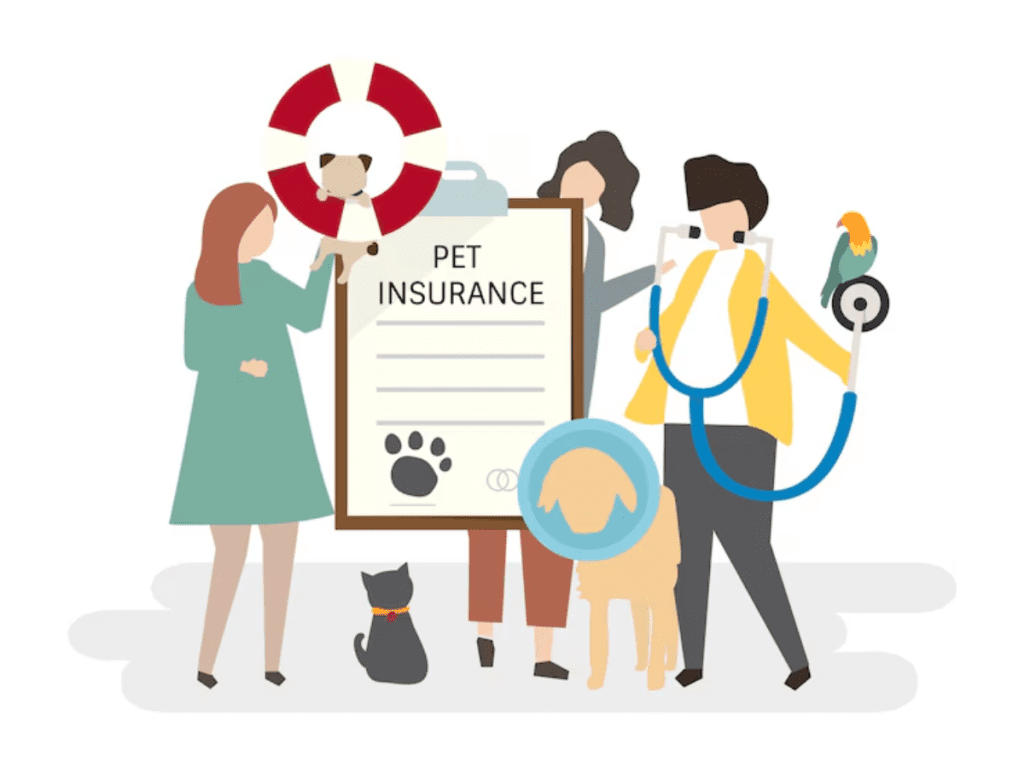Introduction
Pets have come a long way from being domestic animals to being full members of most families Their emotional function and contribution to mental health companionship and emotional support have made them almost as vital as human family members With this change the necessity to give them proper medical attention has grown exponentially As veterinary science has progressed so have the possibilities for diagnosing treating and managing various health issues in animals This greater ability brings improved health results but also results in a greater financial investment which many pet owners are not entirely ready for Without pet insurance paying for the full expense of veterinary treatment can be daunting particularly in times of emergencies or in the case of chronic diseases that need long term management
Comprehending the Veterinary Service Costs of the Present
Veterinary services encompass a broad range of services from routine wellness checks and vaccinations to intricate surgeries and long term disease management On the lower end a standard visit could cost between fifty and two hundred dollars depending on the location and services rendered However more extensive treatments such as dental cleanings advanced imaging or surgical intervention can easily run into the thousands of dollars For example treating a pet that has ingested a foreign body may involve X rays anesthesia and surgery which can together cost between two thousand and five thousand dollars Likewise managing diabetes or kidney disease requires ongoing monitoring medications and follow up visits that can cost hundreds of dollars a month Over the course of a pet’s life these costs can run into tens of thousands of dollars making it essential to plan ahead financially
Why so Many Pet Owners Have Trouble with Unplanned Expenditure
Most pet owners do not realize the magnitude of the financial undertaking of having a pet particularly when it involves sudden medical crises Under such circumstances owners find themselves forced into making hard choices between undertaking necessary treatment and safeguarding their financial health Emergency clinics pay most charges in cash which contributes to the stress For instance having a broken limb treated could cost over three thousand dollars and upset a household budget for a family that is not ready for such a financial outlay The psychological stress of not being able to afford treatment is overwhelming especially if the pet is regarded as a family member This dilemma highlights the need to investigate options like pet insurance that can help deflect the brunt of unexpected veterinary expenses
What Pet Insurance Is and How It Works
Pet insurance works in much the same way human health insurance does albeit with some variations Most pet health insurance plans work on a reimbursement model where the owner pays the veterinarian out-of-pocket and then files a claim with the insurance company for reimbursement Plans vary greatly but typically they pay for accidents illness and in some cases even preventative care based on the type and amount of coverage The owner chooses a plan with a deductible and a percentage payment usually between seventy and ninety percent once the deductible is paid This format provides owners with the ability to get back a large percentage of veterinary costs allowing it to be easier to authorize necessary treatments without first considering cost
Types of Pet Insurance Plans That Exist
There are a number of various pet insurance plans each catering to various budgets and needs Accident only plans are the most limited and cheapest They are meant to pay for accidents like injuries poisoning or foreign object ingestion Accident and illness plans have wider coverage and encompass treatment of infections cancer genetic conditions and others Comprehensive plans do even more to cover preventive treatments like vaccinations flea control and dental cleanings Some companies also have wellness add-ons that pay for routine care as an optional addition It is critical that pet owners consider these alternatives based on their pet’s needs and their financial ability
The Long Term Financial Consequence of Living Without Insurance
Forgetting to get pet insurance can leave owners with greater long term financial burdens Skipping the coverage may feel like a short term save but can be very expensive in the long run Especially as pets get older and more prone to illness and injury medical bills rise substantially For instance an older dog with arthritis may need pain killers special foods physical rehabilitation and frequent visits to the vet Without coverage these ongoing costs can empty savings accounts very quickly Insurance spreads the expense of care out over time and reduces the likelihood of being financially caught off guard if serious illness strikes
Real-Life Examples Illustrate the Worth of Pet Insurance
Most pet owners who have experienced medical crises without insurance can attest to the challenges involved Take a dog owner whose pet acquired a serious gastrointestinal blockage that needed to be treated in an emergency operation The overall price was over five thousand dollars that needed to be paid upfront before treatment could proceed In contrast, another pet owner with the same problem but who had pet insurance only paid a fraction of the expense after an eighty percent reimbursement was made The contrast between financial burden in the two scenarios is striking and how much insurance can mean when unexpected medical necessities arise
The Psychological Benefits of Being Covered
Having pet insurance does more than offer financial protection it also provides peace of mind Pet owners who have coverage are less likely to feel stressed and anxious when their pets get sick or injured They are less likely to make decisions about health based on what is cheapest and more likely to make decisions based on what is best for the pet This peace of mind enables them to concentrate on helping their pet emotionally and physically recover rather than worrying about expenses Having the knowledge that assistance is there in paying for medical bills can significantly enhance the owner’s emotional strength and quality of life during challenging times
Dispelling Popular Misconceptions Regarding Pet Insurance
One of the main reasons pet insurance is not used more widely is through sheer misconceptions Many people think the insurance process is too complicated or claims are not very likely to be approved However, legitimate pet insurers have simple online claim procedures and a high approval rate with complete documentation Another fallacy is that pet insurance is just for unhealthy or aged pets In fact, insuring a pet when it is young and healthy tends to result in lower premiums and broader coverage Lastly, some feel that putting money aside in an emergency fund is better than monthly premiums While savings are good, they may not be enough in extreme emergencies where the cost runs in several thousand dollars Insurance provides a much greater measure of financial security in these types of situations
Early Enrollment Has Important Benefits
The ideal time to get pet insurance is when the pet is young and healthy Younger animals tend to qualify for lower premiums and are less likely to have pre existing medical conditions which are usually not covered under the policy Joining early makes sure that any long term health problems in the future will be picked up by the policy allowing the pet to be given full care for its lifespan Joining early also makes it easier for owners to familiarize themselves with their insurance policy and claims process so that when emergencies strike they will be adequately prepared to act with speed
Tailoring Insurance to Fit Your Pet’s Requirements
Each pet is different and so are their health requirements Different breeds have different predispositions to different health problems For example larger breeds of dogs are more likely to suffer from hip dysplasia whereas certain cats are more likely to suffer from kidney disease By choosing a policy that covers breed specific risks owners can make sure that they get the most appropriate cover Some policies provide the option to customize plans based on the age breed activity level and overall health of the pet which enables owners to get the optimal balance between cost and cover
The Unseen Value of Pet Insurance in Preventive Care
Most thorough pet insurance policies cover or provide add-ons for preventive care That is, regular checkups shots and screenings are also covered in part Encouraging preventive care is one of the most effective means of early detection of health issues, which in turn often results in better outcomes and lower treatment costs Preventive care also promotes a strong bond between the pet owner and the veterinarian, which is critical in the effective management of the pet’s health over time By covering preventive services, insurance encourages a holistic pet wellness approach rather than addressing health concerns only when they are extreme
How to Choose the Right Provider and Plan
With so many pet insurance providers to choose from, choosing the correct provider and policy can appear overwhelming Key issues to examine are the company’s reputation speed of claim payment quality of customer service transparency regarding terms and exclusions and flexibility in policy options Pet owners need to read the fine print to determine what is and isn’t covered including any yearly or per condition limits Further it is advisable to compare the waiting periods for each kind of coverage and to examine whether the insurer will cover treatment by any qualified veterinarian or just within a designated network An educated choice guarantees that the policy purchased is one of substance and value as well as peace of mind
Multi Pet Households and Insurance Considerations
For multiple pet households the cost can be even higher particularly when multiple pets need to be treated at once Many insurance companies provide multi pet discounts that mitigate the overall cost of premiums Ensuring all the pets guarantees timely medical care to each animal without breaking the family budget Further covering all policies by a single company makes administration easy and provides the same level of care to all members of the household This system is especially valuable for families that treat their pets as part of the family and wish to extend the same quality of care to each
Conclusion
The increasing expense of veterinary care is a reflection of the great strides in animal medicine but it also puts a huge financial burden on pet owners Without pet insurance dealing with these expenses can be a serious challenge causing tough emotional and financial choices Investing in pet insurance provides a pragmatic and humane solution offering both financial security and emotional peace of mind From accident coverage to chronic disease management and preventive care insurance ensures that pets receive timely and proper medical care irrespective of their owner’s financial standing It also promotes responsible pet ownership by allowing better planning and decision making Selecting the right insurance plan and enrolling early are key steps in protecting the health and happiness of pets in the modern world As veterinary care keeps on advancing pet insurance will remain an invaluable resource in ensuring that pets live long healthy and well cared for lives

